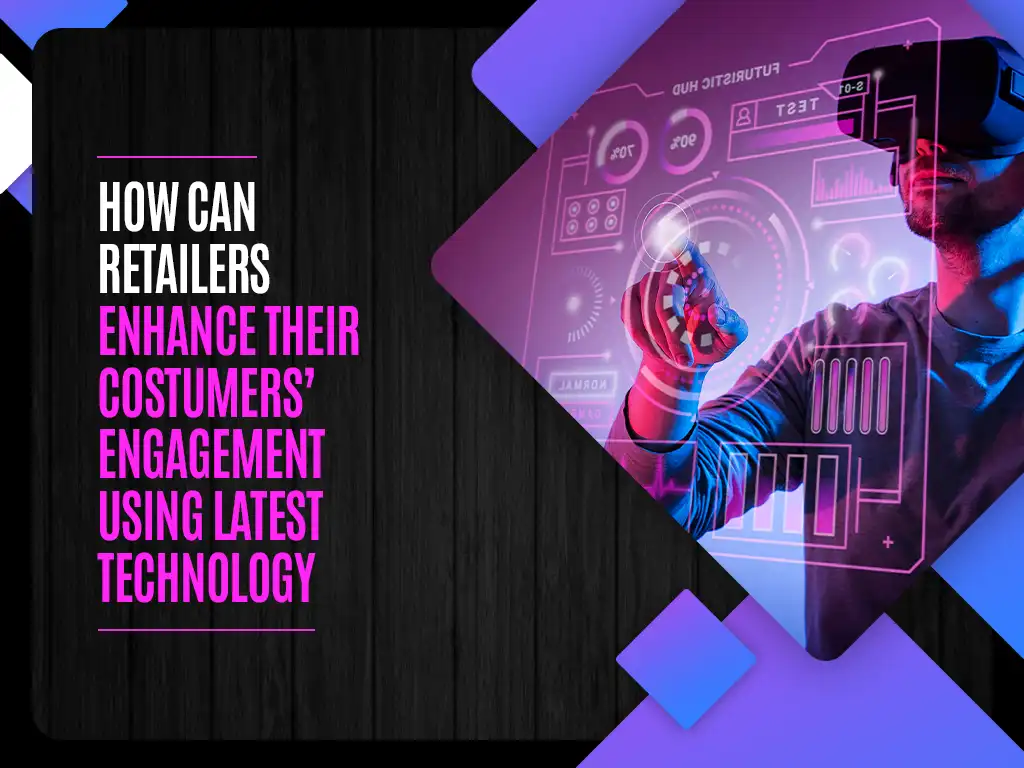How Can Retailers Enhance Their Costumers’ Engagement Using Latest Technology
This article discusses how retailers can benefit from the advancements in technology to enhance their customer engagement shaping their retail venture.

In today’s fast-paced and ever-evolving retail, the integration of technology has become a game-changer. The retail industry is embracing technological advancements to streamline operations, enhance customer experiences, and stay ahead of the competition. As a business owner or manager, you recognize the pivotal role that technology plays in shaping the future of your retail venture.
The retail sector has witnessed a remarkable transformation, driven by the advent of digital tools, data analytics, and innovative solutions. From mobile applications to augmented reality, retailers are leveraging cutting-edge technologies to captivate customers and deliver personalized shopping experiences. This paradigm shift has empowered businesses to connect with their target audience on a deeper level, fostering long-lasting relationships and driving customer loyalty.
As you navigate the complexities of the retail industry, it is essential to understand the importance of customer engagement and how technology can be a powerful catalyst in achieving this goal. By embracing the right technological solutions, you can unlock new avenues for growth, streamline operations, and cultivate lasting connections with your customers.
Importance of Customer Engagement in Retail
Customer engagement is the cornerstone of success in the retail industry. In an era where consumers have a plethora of choices, fostering meaningful connections with your target audience is paramount. Engaged customers are more likely to remain loyal, advocate for your brand, and contribute to your business’s long-term growth.
Effective customer engagement strategies revolve around understanding your customers’ needs, preferences, and behaviors. By leveraging data-driven insights and personalized experiences, you can create a seamless and memorable shopping journey that resonates with your audience. This, in turn, can lead to increased customer satisfaction, repeat business, and a stronger brand reputation.
Technology plays a pivotal role in facilitating customer engagement by providing innovative tools and platforms that enable you to connect with your customers on a deeper level. From personalized recommendations to real-time communication channels, technology empowers you to deliver tailored experiences that resonate with your target audience.
Benefits of Using Technology for Customer Engagement
Embracing technology for customer engagement can yield numerous benefits for your retail business. Here are some key advantages:
Personalized Experiences: By leveraging data analytics and customer insights, you can offer personalized recommendations, targeted promotions, and tailored shopping experiences that cater to individual preferences and behaviors.
Omnichannel Engagement: Technology enables seamless integration across multiple channels, allowing customers to engage with your brand through various touchpoints, such as mobile apps, social media, and in-store experiences.
Real-time Communication: With the power of technology, you can establish real-time communication channels, enabling prompt responses to customer inquiries, feedback, and concerns, fostering a sense of trust and loyalty.
Enhanced Convenience: By incorporating technologies like mobile apps, self-checkout systems, and online ordering, you can streamline the shopping process, reducing wait times and enhancing overall convenience for your customers.
Data-driven Insights: Technology empowers you to gather and analyze customer data, providing valuable insights into purchasing patterns, preferences, and behaviors, which can inform your marketing strategies and operational decisions.
Overview of Mobile Device Management
In the realm of technology for customer engagement, mobile device management (MDM) has emerged as a powerful solution. MDM refers to the software and processes used to secure, monitor, and manage mobile devices within an organization, including smartphones, tablets, and other portable devices.
As customers increasingly rely on their mobile devices for shopping and interacting with brands, MDM becomes a critical component in enhancing customer engagement. By implementing an effective MDM strategy, you can ensure a seamless and secure mobile experience for your customers, while also gaining valuable insights into their behavior and preferences.
The power of mobile device management in enhancing customer engagement
The power of mobile device management offers numerous advantages in enhancing customer engagement within the retail industry. Here are some key benefits:
Secure Mobile Experiences: MDM solutions provide robust security measures, such as device encryption, remote data wiping, and application management, ensuring that your customers’ sensitive information and transactions remain protected.
Seamless App Deployment: With MDM, you can streamline the deployment and management of mobile applications, enabling customers to access your brand’s app seamlessly across multiple devices.
Targeted Content Delivery: MDM allows you to push targeted content, promotions, and updates directly to your customers’ mobile devices, ensuring they stay informed and engaged with your brand.
Personalized Interactions: By leveraging MDM’s data collection and analytics capabilities, you can gain valuable insights into customer behavior, preferences, and usage patterns, enabling you to deliver personalized experiences and targeted marketing campaigns.
Remote Support and Troubleshooting: MDM solutions often include remote support and troubleshooting features, allowing you to promptly address any issues or concerns your customers may encounter, enhancing their overall experience.
Best Practices for Implementing Technology in Retail
To effectively boost your customer engagement, you can benefit from technology in retail business. It is crucial to follow best practices. Here are some key considerations:
Prioritize Customer Experience: When implementing new technologies, always prioritize the customer experience. Ensure that the solutions you adopt are user-friendly, intuitive, and seamlessly integrated into the overall shopping journey.
Embrace Omnichannel Strategies: Develop an omnichannel approach that seamlessly integrates various touchpoints, such as online, mobile, and in-store experiences, providing a consistent and cohesive brand experience for your customers.
Invest in Data Analytics: Leverage data analytics tools to gain valuable insights into customer behavior, preferences, and purchasing patterns. Use these insights to inform your marketing strategies, product offerings, and operational decisions.



